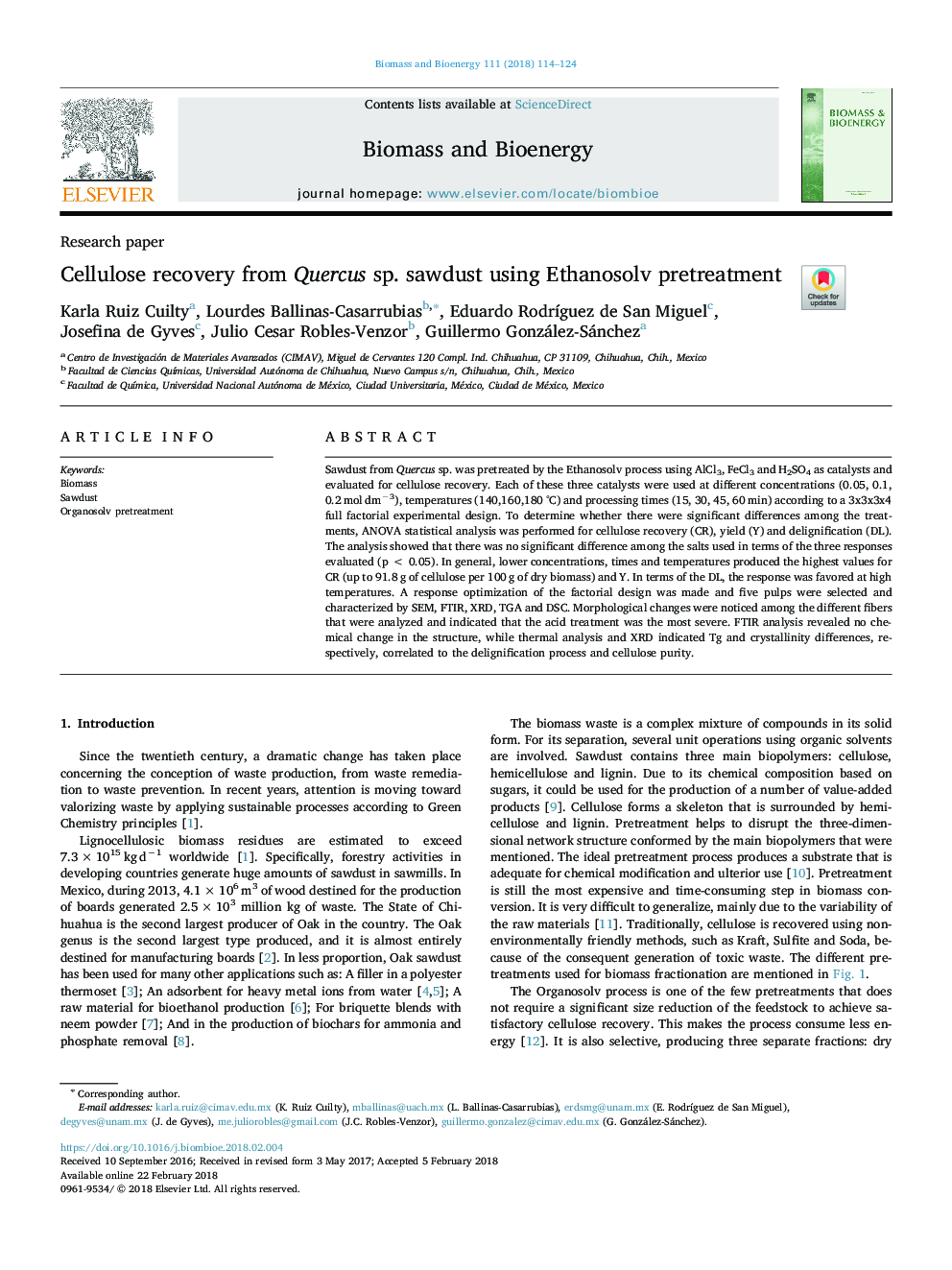| Article ID | Journal | Published Year | Pages | File Type |
|---|---|---|---|---|
| 7062946 | Biomass and Bioenergy | 2018 | 11 Pages |
Abstract
Sawdust from Quercus sp. was pretreated by the Ethanosolv process using AlCl3, FeCl3 and H2SO4 as catalysts and evaluated for cellulose recovery. Each of these three catalysts were used at different concentrations (0.05, 0.1, 0.2â¯molâ¯dmâ3), temperatures (140,160,180â¯Â°C) and processing times (15, 30, 45, 60â¯min) according to a 3x3x3x4 full factorial experimental design. To determine whether there were significant differences among the treatments, ANOVA statistical analysis was performed for cellulose recovery (CR), yield (Y) and delignification (DL). The analysis showed that there was no significant difference among the salts used in terms of the three responses evaluated (pâ¯<â¯0.05). In general, lower concentrations, times and temperatures produced the highest values for CR (up to 91.8â¯g of cellulose per 100â¯g of dry biomass) and Y. In terms of the DL, the response was favored at high temperatures. A response optimization of the factorial design was made and five pulps were selected and characterized by SEM, FTIR, XRD, TGA and DSC. Morphological changes were noticed among the different fibers that were analyzed and indicated that the acid treatment was the most severe. FTIR analysis revealed no chemical change in the structure, while thermal analysis and XRD indicated Tg and crystallinity differences, respectively, correlated to the delignification process and cellulose purity.
Related Topics
Physical Sciences and Engineering
Chemical Engineering
Process Chemistry and Technology
Authors
Karla Ruiz Cuilty, Lourdes Ballinas-Casarrubias, Eduardo RodrÃguez de San Miguel, Josefina de Gyves, Julio Cesar Robles-Venzor, Guillermo González-Sánchez,
